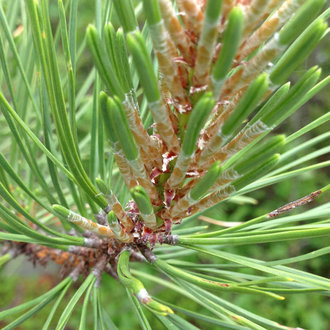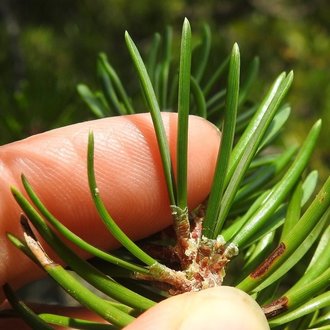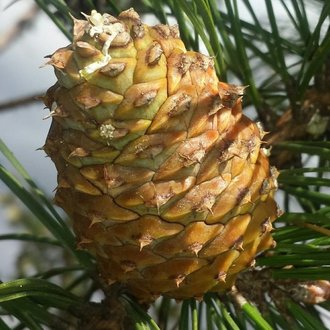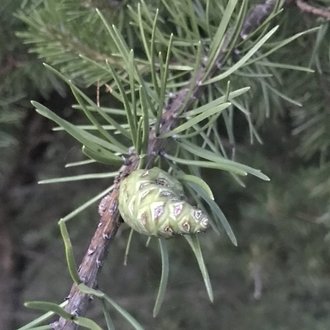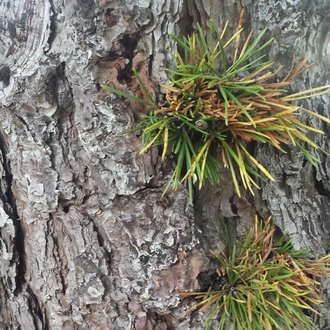Pitch Pine vs Jack Pine
This guide is under construction and has not been published yet. It may have errors. When in doubt, double-check other sources for definitive ID.Where their ranges overlap, these pines often occupy the same harsh, fire-prone habitats, and both tend to retain dead branches. They are easily distinguished by non-overlapping needle lengths, different numbers of needles per cluster, and cone size.
Pitch Pine (Pinus rigida) | Jack Pine (Pinus banksiana) |
A scrubby, fire-adapted pine that often grows in harsh conditions, such as dry, acidic, sandy or rocky soil. | A fire-adapted pine with a northerly distribution in North America, the densest parts of its range in Canada, northern New England, and the upper midwest. |
Three needles per cluster. Longer needles, usually longer than 2 inches. Photo © charlie, CC BY 4.0. | Two needles per cluster. Very short needles, usually less than 2 inches. Photo © Laura Gaudette, CC BY 4.0. |
Larger cones less likely to curve. Photo © Laura Gaudette, CC BY 4.0. | Smaller cones often curve strongly. Photo © Aaron Boers, CC BY 4.0. |
Resprouts, from the base or the trunk. Photo © Laura Gaudette, CC BY 4.0. | Does not resprout. |
References & External Resources
These short lists show only links helpful for ID. For a complete list of references and resources also covering other aspects of ecology, visit the links section of the full article on each plant, which is the first entry here.



